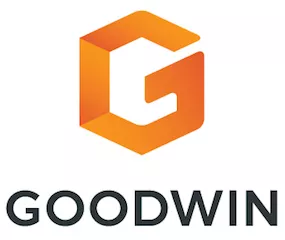In a market in which attractive assets draw fierce competition, smart buyers are finding ways to stand out through value creation rather than higher prices.
This is the fourth article in our "Strategies for Winning Deals" series, which highlights ways that private equity sponsors can gain a competitive edge in buyouts without overpaying
In today's fiercely competitive market for attractive assets, buyers face a challenging reality: Valuation expectations from sellers often stretch even the most disciplined pricing frameworks. While deal volumes remain below 2021 peaks, demand for quality targets continues driving intense competition among prospective acquirers.
When multiple buyers circle highly sought-after assets, how can acquirers maximize their chances without simply paying more? Success increasingly depends on creative strategies that enhance seller value without inflating headline prices or up-front equity requirements. The winning approach combines sophisticated tools with a solutions-oriented mindset focused on genuine win-win outcomes.
Tax Strategy as Competitive Advantage
Understanding the Seller's Complete Picture
Winning buyers start by viewing transactions through sellers' eyes, particularly regarding tax implications. In founder-backed businesses and lower middle-market deals, significant asymmetries may exist between the buyer's and seller's tax structuring sophistication. Rather than leaving sellers to navigate these complexities alone, successful acquirers engage experienced advisers and apply creative thinking to maximize the seller value.
The QSBS Opportunity
For US corporate targets, qualified small business stock (QSBS) represents particularly fertile ground for value creation. Sellers may inadvertently create QSBS without recognizing its existence or potential benefits. When QSBS meets the required five-year holding period and other requirements, sellers can achieve substantially reduced tax burdens. This opens opportunities to recalibrate the mix of sold versus rolled equity, maximizing tax benefits for sellers.
Buyers that demonstrate creativity and flexibility around QSBS, as compared to competitors presenting "take it or leave it" structures, can build goodwill that extends far beyond "found money" for sellers. Investing resources in QSBS signals a buyer's commitment to partnership that helps earn a seller's trust.
Additional Tax-Driven Differentiators
Beyond QSBS, several approaches can distinguish buyers:
- Partnership structures enabling go-forward equity incentives treated as profits interests rather than stock options, providing capital gains treatment on incentive equity to sellers who continue with the business
- Flexibility on pre-closing taxes, including seeking and transferring pre-closing income tax refunds as and when received or pursuing expedited refunds (so called "quickie" refunds) for estimated tax overpayments for the current taxable year
- Holistic seller needs assessment, addressing charitable giving goals or estate planning requirements through meaningful engagement with sellers' advisers
Bridging Valuation Gaps
When headline values cannot increase, de-risking seller equity and providing additional upside can close valuation gaps.
Working Capital Protection
Working capital adjustments often create seller anxiety, particularly when facing sophisticated financial sponsors. Successful buyers address these concerns through:
- Working capital "collars" that limit or eliminate adjustments within agreed ranges for target values
- Escrow-only recovery mechanisms for purchase price adjustments, assuring sellers against "system gaming" and providing certainty on sellers' closing proceeds
Upside Participation Strategies
Equity rollover is a common tool in M&A transactions for seller upside participation, often structured on tax-deferred bases to mitigate up-front taxable gains to sellers. Buyers can demonstrate a commitment to partnership by providing:
- Rollover equity to be pari passu with buyers' go-forward equity
- Board representation for sellers
- Seller consent rights over specific post-closing actions to provide seller comfort with post-closing operating plans
Milestone-linked payments are post-closing payments tied to business performance that align incentives while providing seller value funded by target business performance rather than additional buyer equity. Earnouts — tied to revenue, earnings, contract milestones, or other triggers — can effectively bridge gaps between seller valuation expectations and buyer final offers when properly structured.
The Partnership Premium
These strategies serve dual purposes: unlocking additional seller value and providing tangible evidence of partnership commitment. In scenarios in which sellers retain meaningful post-transaction ownership, this commitment often proves decisive in winning deals, even for buyers that don't lead on headline purchase price.
Success in creative M&A deal structures requires buyers to embrace solutions-oriented valuation approaches supported by experienced advisers with deep market knowledge. In today's competitive landscape, the most successful acquirers understand that winning deals demands more than the highest bid — it requires demonstrating genuine commitment to seller success and partnership that leads to long-term value creation.
* * *
The next article in our "Strategies for Winning Deals" series, "Right Next Owner: Positioning Yourself as the Best Partner," examines tactics sponsors can use to demonstrate genuine partnership and long-term commitment.
The content of this article is intended to provide a general guide to the subject matter. Specialist advice should be sought about your specific circumstances.



